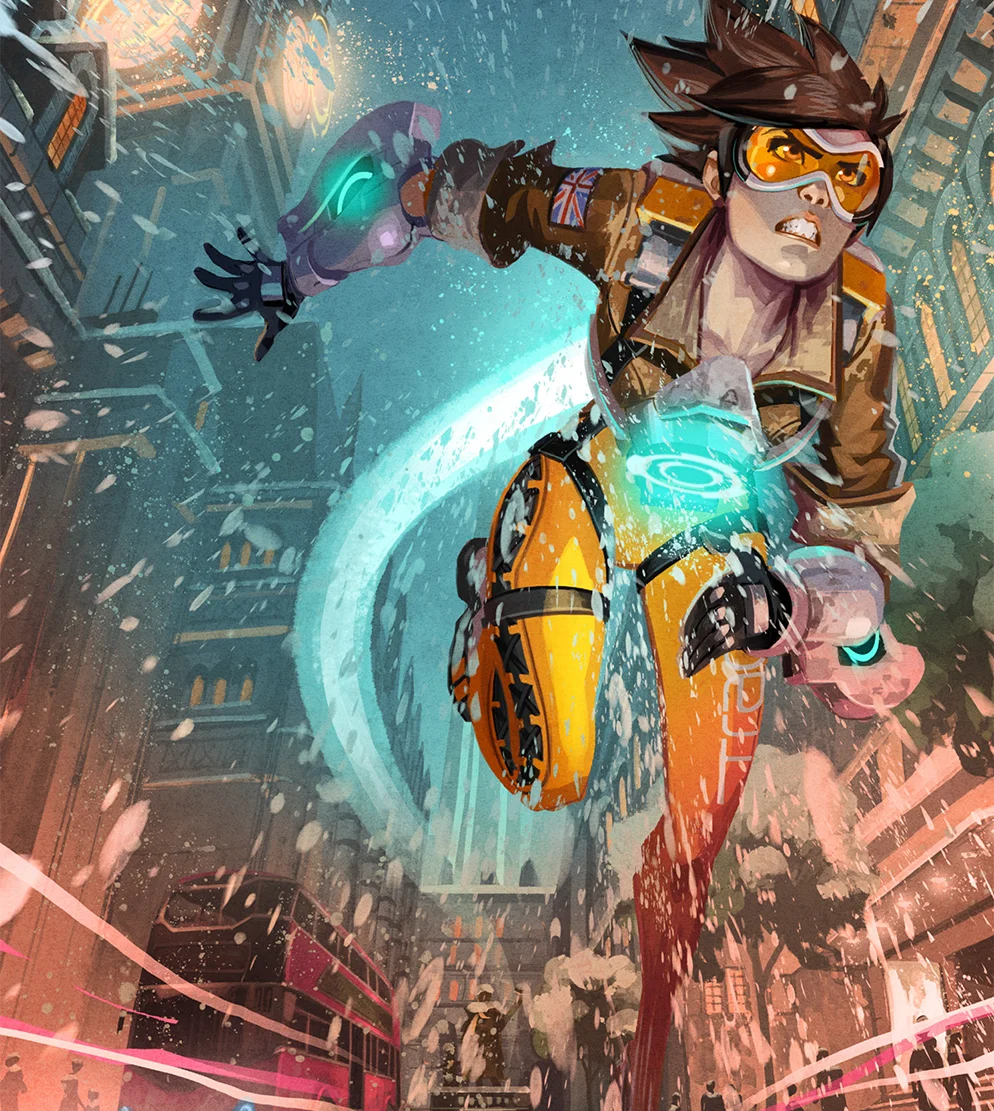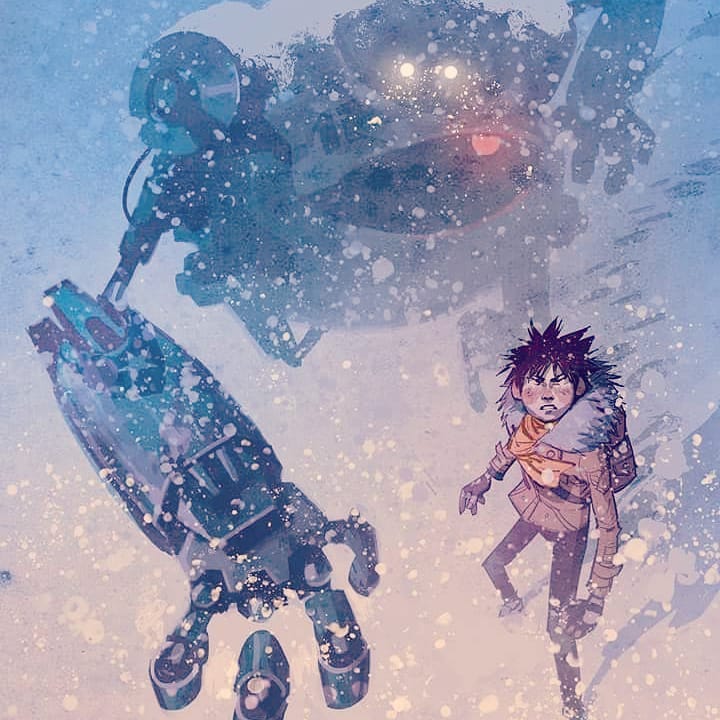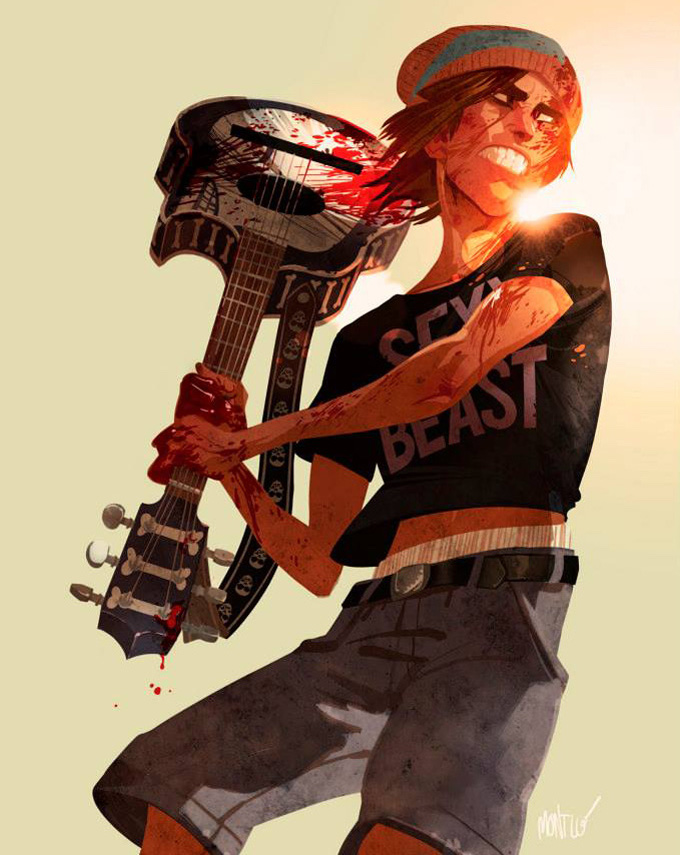Miki Montlló
/Where did you grow up? At what age did you start thinking about pursuing an artistic career?
I grew up in different cities near Barcelona, constantly moving home and school. I had a very diverse education, private and public school, and I think that got me used to constant change. When I was thirteen, my father brought me to the textile factory he owned to work during the summer. The first day I stepped in there I decided that I should put my effort on doing something I really loved, like drawing, or I would probably spend the rest on my life working on something that would not provide me any satisfaction. But I still spent a couple of summers in that factory.
Did you go to an art school or are you self taught? How did you develop your skills?
I started going to Joso Comic School in Sabadell when I was 13. Then I went through Elementary and High School, and I started Fine Arts in Barcelona. But after six months in Fine Arts I came to the conclusion that it really wasn’t my thing, so I quitted and I went back to Joso School, this time in Barcelona. I simply never stopped drawing everyday since I was a kid. I tried, the same way I heard Robert Crumb was doing, to make drawing as an integral part of my everyday life, almost compulsive, like breathing or blinking.
Have you always been supported in your artistic path or has it been challenging to let your family and friends understand your choice?
Luckily I’ve always been accepted as the “artist of the family”. Although I suspect that at some point there was a bit of skepticism about the fact that I could have made a living out of it, I started working at a very young age, so obviously since then no one has really ever express any perplexity on the matter.
What was the strongest influence you had when you were growing up ( artists, movies, cartoons, comics etc.. ) ?
As someone born in the 80's, my influence were extremely diverse as globalization was already starting. So influences came as waves. First there was all the classical Spanish comic artists from Bruguera ( 60's and 70's) like Jan, Ibàñez, Escobar, Vázquez… then the French and the Belgians, Goscinny and Uderzo, Hergé, and I also got into videogames when I was around 10, and that was like an open door to a new world. At the same time, I grew up watching all the classic Warner Brothers cartoons and Disney movies from the 90s, and when I was about 12 I got into American superheroes. Manga comics had also a very strong impact on me: Toriyama, Kishiro… so I was getting all this influences from books, comics, movies, videogames and at the same time, I was trying to blend them all and to translate them into my first comics.
Did you have a favourite subject to draw when you were a child and do you still have one today? If you do, what makes it so special?
I always enjoyed to draw monsters and weird looking guys with nice moustaches, most of the time drinking cocktails! I have no idea why I like to draw that, I suspect I might have looked like that in one of my past lives, probably as a smuggler or on extortionist..
From the initial client idea to the final work: What goes through your mind and what is the method you use when starting a project? Could you describe it?
Basically, my first thought is always something like: ''How can I transform this into something interesting to draw, to make it part of my own imaginary world?''. I try to have a personal approach to all my works. Normally I try to find a connection with something I’ve seen or lived and that is particularly interesting to me. If I am able to find that, usually everything goes smooth.
What is your process in creating your art and what are your favourite tools?
I have dozens of video process on my FB site, I usually sketch on Clip Studio Paint and I paint in photoshop, although I also use traditional media like pencils, pens, ink, acrylics, etc.
What part of the creation process is the most fun and easy and what part is the hardest?
Usually I do enjoy a lot the first part, when everything is still open to any possibility and I feel the enjoyment of facing the unknown. It is a kind of controlled excitement, because I need to get to a state of peace of mind, in which ideas can flow from my mind to the paper. Then I start working, and usually the hardest part is to know when to finish, so as I keep losing interest on what I am doing I get to a point where I simply quit the drawing. The fact that I follow a structured process that goes from the more general aspects to specific details makes the drawing look finished.
What are some of the things you have learned from other artists who you have worked with or whose work you have seen?
I learned a lot of things, but probably the most important one is that there is no formula for success in arts. What you will require for sure is great passion and love for what you do. You have to be aware that everything that goes through your mind, even the content you don’t want to be revealed, is exposed on your work. So, even if it sounds a bit clique, the only way to be a true artist is to know yourself and to dare to be yourself, and not what people expects you to be.
Is there something that you have designed that you are most proud of?
I am really proud of all my comics. It was my childhood dream and I feel like I made the kid I once was very happy. And sometimes they make other people happy too!
What projects have you worked on in the past and what are you working on at the moment (if you can tell us)?
I have work in many different projects: animation movies and shows, personal comic projects, comics for companies (like Blizzard), backgrounds for videogames (Runaway, Hollywood Monsters, Broken Sword). I have collaborated with animation studios like Cartoon Saloon, Axis and Laika. Right now I’m on a break that will last for a few months, so I am only doing private commissions and teaching at CG Masters Academy, and in the meantime I am developing another comic project which I will write and draw myself.
Do you have a longterm career goal? What would your dream project be?
My longterm goal is to be more and more happy with what I already do, become less dependent on companies and studios, and to live only doing what really appeals me every day of my life. I am getting there, one step at a time.
Working in-house for a company or freelancing: what suits you best? And why?
Definitely freelancing. I get bored of things quite quickly. That includes offices and schedules. Freelancing allows me to travel while I'm working, to be able to decline a job that has no interest or to wake up whenever I feel like waking up. And that is a privilege that I want to keep.
What advise would you give to an artist who is dealing with an artist's block? How do you boost your imagination and keep yourself creative?
Travel. The worst enemy for an artist is a boring routine and lack of stimulations. Traveling wakes up your mind and open your eyes to the ever-changing nature of reality.
Who are the artists who inspire you the most today and what are some of your favourite designs out there?
There are so many that are inspiring and frustrating at the same time. I’ve been following for years the work of a painter artist who has work a lot in animation, named Neil Campbell Ross. He is a very good reference.
Computer Graphics Master Academy (CGMA) is one of the most appreciated online artistic training worldwide. Can you tell us a bit more about your experience as one of the school's instructors?
Being a teacher is a great experience, but it is also very challenging. The people who are in the school are very committed and it is a big responsibility to orientate them on their future careers. It takes a lot of energy but provides a great satisfaction. It also makes you verbalize all the knowledge you’ve been gathering through the years, and makes you realize that those things you apply to your work by instinct on a daily basis actually make sense.
As one of the instructors of CGMA, what are the most common mistakes that you come across when reviewing the work of your students? How important is it to receive feedback from a professional such as yourself, and how will students benefit from it?
I would not call it a mistake, but usually I find out that many students try to apply a lot of tricks they take from professional artists they see on the internet without really knowing how to actually use them. I keep telling them: ''You do not have to be a technically virtuoso to be able to tell a good story''. So, focus on the tools you know how to use, and try to tell a story with them. As you keep practicing, your technical skills will improve to serve your storytelling, and not the opposite.
Finally, where can we see your art online and get in touch with you? Where can we find all the info to know more about your teaching approach and enrol to your classes?
Well, I’ve always been using Facebook a lot to show videos and tutorials of my work, and last year I also opened an Instagram account (I know, I am so late!). But I am seriously thinking on opening a Patreon and a Gumroad site, where I would post spoken tutorials (in English and maybe Spanish) regularly. Also I just finished working on the course “Comics: the Art of Storytelling”, which I designed myself for the ones who want to learn about comics and all the stages of its making, from the script to the publishing. Here’s the links to my Facebook page ( facebook.com/mikimontllo ), my Instagram account ( instagram.com/mikimontllo ) and to join my class at CGMA ( 2d.cgmasteracademy.com/comics-the-art-of-storytelling.html ).
Join Miki's next class!
Miki Montlló is one of talented instructors of CG Master Academy. Discover all the details about his course, join his next class and develop the skills you need to enter the industry and pursue the career you love.













































































